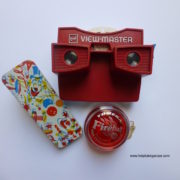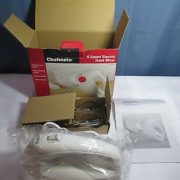Determine, Decide, Dispose

How easy is it for you to get rid of stuff? Deciding what is worth keeping and what needs to go, can be difficult. I follow a three step confirming process. These three steps help me confirm what I have, and decide what I need, use, and want. The first step is to determine what I have. The second step is to decide what stays and what goes. The third step is to dispose of stuff. Let me explain how this confirming process works.

The first step is to determine what I have. This means gathering and assessing. I pick a small group of items to work with at a time. Instead of working with all my clothes, I work with just my spring wardrobe. Another example is instead of working with all my books, I only work with my organizing books. This helps reduce the time needed to complete the process, and helps prevent procrastination. Once I’ve chosen which category I want to work with, I gather the items into one location and assess them.
The second step is to decide what stays and what goes. I find it helpful to have criteria for what items stay and what items go. I call them my confirming guidelines, and they help me make decisions.
Examples of confirming guidelines:
1. It has to go if it’s broken, damaged, or missing parts, and you’re not going to fix it or pay to have it fixed within 3 months.
2. It has to go if it hasn’t been used in the past 3 years and won’t be used in the next 3 years.
3. It has to go if it is more than one size too big or too small.
4. It has to go if it’s torn, stained, or moldy, and you’re not going to fix it or pay to have it fixed within 3 months.
5. It has to go if it doesn’t reflect your current lifestyle. (Use 3 year timeline.)
6. It has to go if it’s very similar or identical to another item. Keep three favorites and the rest have to go.
7. It has to go if you’ve already purchased a replacement for it.
8. It has to go if it’s something you don’t like, or something that never worked right or fit right.
9. It has to go if the reason you’re holding onto it is not a good, valid reason. (See blog articles)
10. It has to go if it brings negative thoughts or causes self doubt.
The third step is to dispose of the stuff. It helps to schedule a day for removal, whether it is donations, items to be recycled or items to be given away. Voila! Confirming process complete.
© April 2017 Janine Cavanaugh, Certified Professional Organizer® All Rights Reserved



 Receive invitation. RSVP to invitation. Put details of invitation on
Receive invitation. RSVP to invitation. Put details of invitation on  Acquire toy. Play with toy. If toy breaks or pieces go missing, fix or replace pieces within 3 months or get rid of it. Donate or sell toy within 1-3 years if it’s no longer being used. A wonderful place to donate small toys is
Acquire toy. Play with toy. If toy breaks or pieces go missing, fix or replace pieces within 3 months or get rid of it. Donate or sell toy within 1-3 years if it’s no longer being used. A wonderful place to donate small toys is  Receive coupons. Immediately recycle any coupons you know you won’t use. Store the rest of the coupons in a specific location until they can be used. Two storage options for coupons are in a basket on the refrigerator, or in a zip lock bag in your purse. Sort through coupons on the first of every month and recycle all the outdated ones.
Receive coupons. Immediately recycle any coupons you know you won’t use. Store the rest of the coupons in a specific location until they can be used. Two storage options for coupons are in a basket on the refrigerator, or in a zip lock bag in your purse. Sort through coupons on the first of every month and recycle all the outdated ones. Acquire electronic device. Use electronic device. If electronic device breaks or pieces go missing, fix or replace pieces within 3 months or get rid of it. Donate, sell, or recycle electronic device within 1-3 years if it’s no longer being used. (Want
Acquire electronic device. Use electronic device. If electronic device breaks or pieces go missing, fix or replace pieces within 3 months or get rid of it. Donate, sell, or recycle electronic device within 1-3 years if it’s no longer being used. (Want  Acquire kitchen gadget. Use kitchen gadget. If kitchen gadget breaks or pieces go missing, fix or replace pieces within 3 months or get rid of it. Donate, sell, or recycle kitchen gadget within 1-3 years if it’s no longer being used. (Want ideas on how to
Acquire kitchen gadget. Use kitchen gadget. If kitchen gadget breaks or pieces go missing, fix or replace pieces within 3 months or get rid of it. Donate, sell, or recycle kitchen gadget within 1-3 years if it’s no longer being used. (Want ideas on how to  Janine Cavanaugh, CPO
Janine Cavanaugh, CPO When reading an organizing book think of the content as a menu where you can pick and choose what fits your unique situation. Otherwise you can get overwhelmed or discouraged with advise that is good, but just won’t work for you. Be selective and choosy. After all the best organizing tip is the one you will do!
When reading an organizing book think of the content as a menu where you can pick and choose what fits your unique situation. Otherwise you can get overwhelmed or discouraged with advise that is good, but just won’t work for you. Be selective and choosy. After all the best organizing tip is the one you will do!



















Follow Me